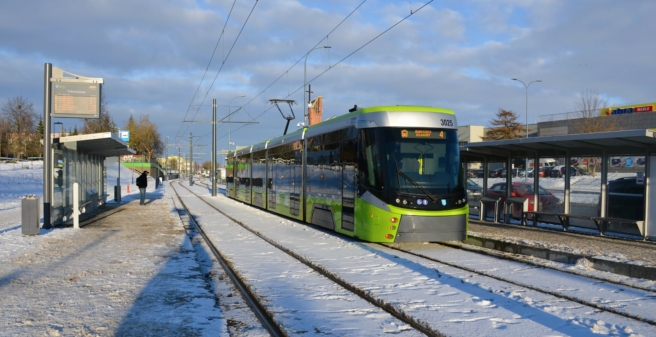
The transition into the New Year of 2024 was used by the town of Olsztyn in the northern part of Poland as an occasion to inaugurate the first extension of its tram network.
The town of 170 000 inhabitants is quite an interesting case study, as it is the first one from a post-communist European country that builds from scratch a tram network after the fall of communism. Olsztyn used to have electric public transport in form of tram and trolleybus, but gave up both of them in 1965 and in 1971, respectively.
On 19 December 2015, after 50 years since the tram operation was discontinued, the town finished building a new tram network that resembles the second-generation systems from western Europe, with routes mostly segregated from road traffic, stub terminals and island platforms that require bidirectional vehicles. The network totalizing 11 km consisted of a North-South route with 2 branches, and trams ran on 3 lines. Immediately after the inauguration, the town hall considered a second phase of tramline construction, and after 8 years of continuous effort in this direction, the plans came to fruition in form of a 6,16 km branch operated by lines 4 and 5.
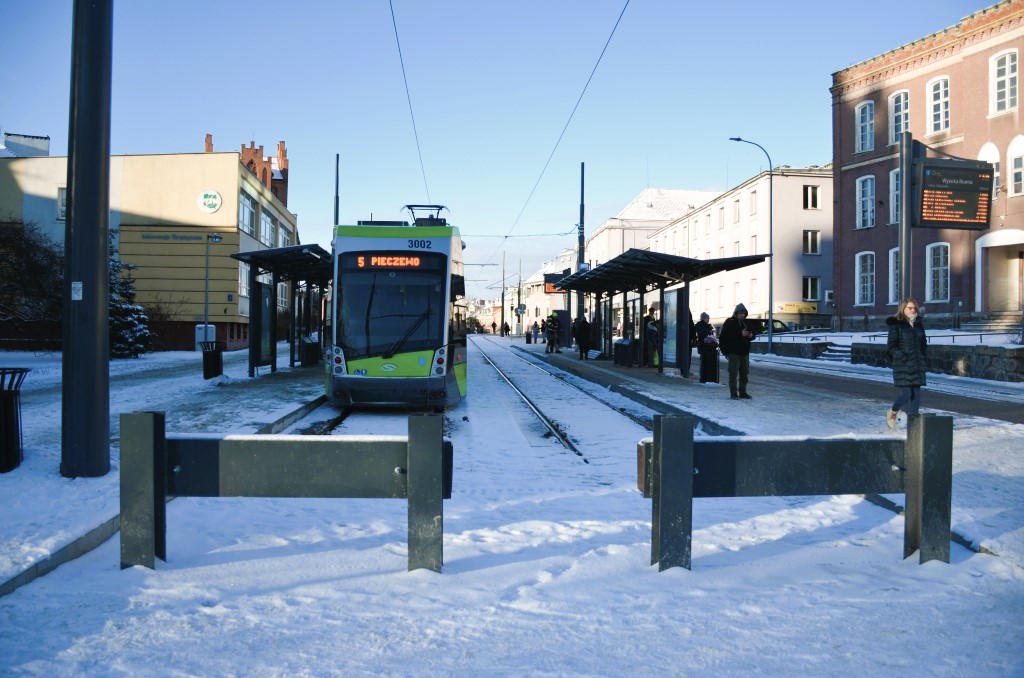
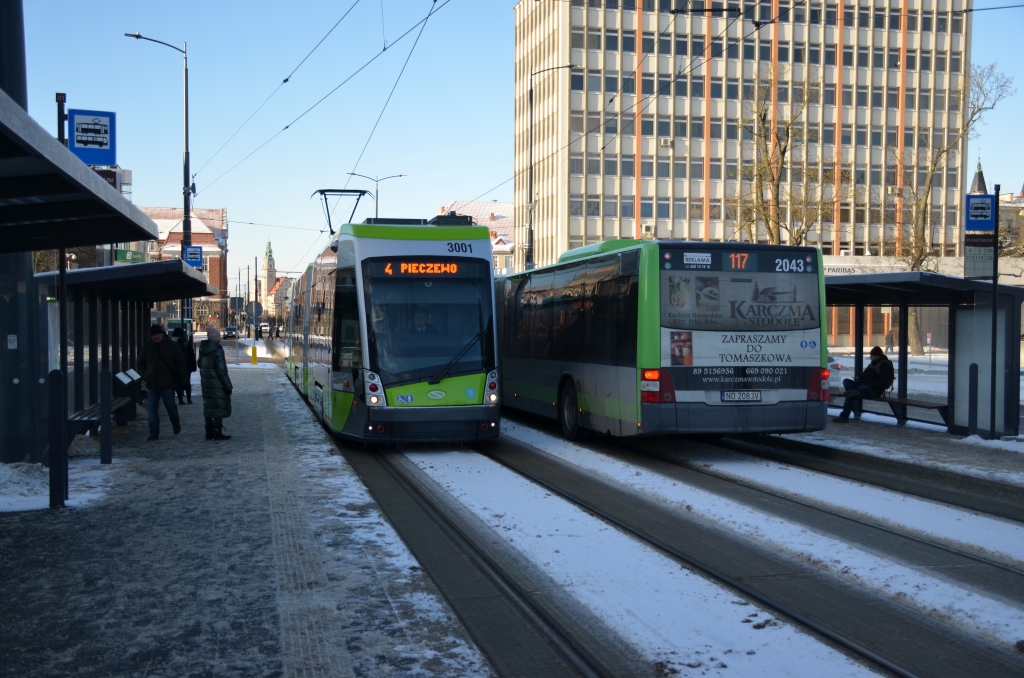
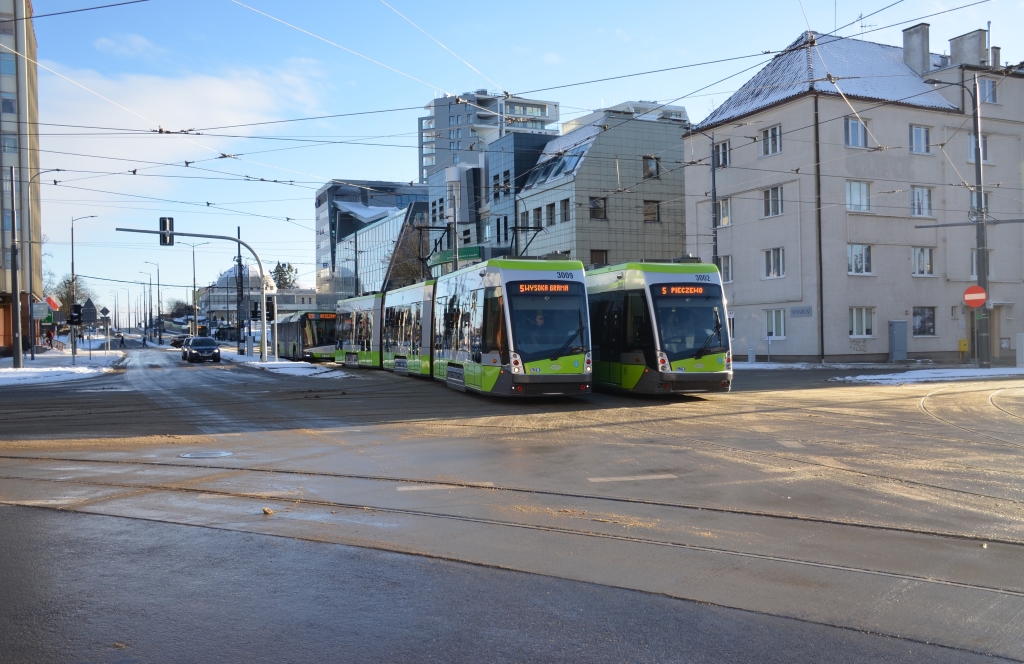
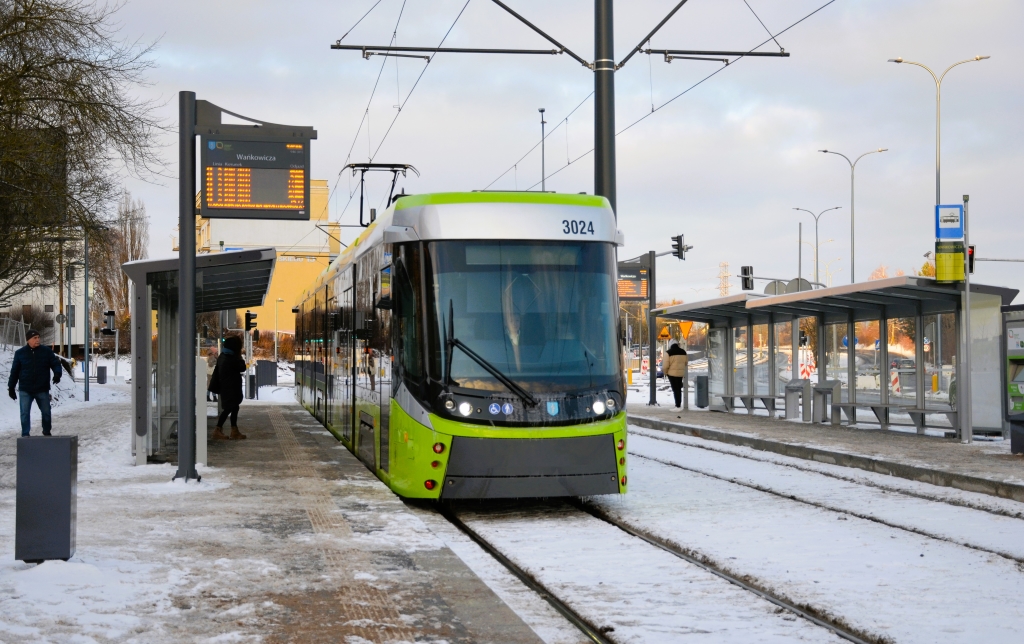
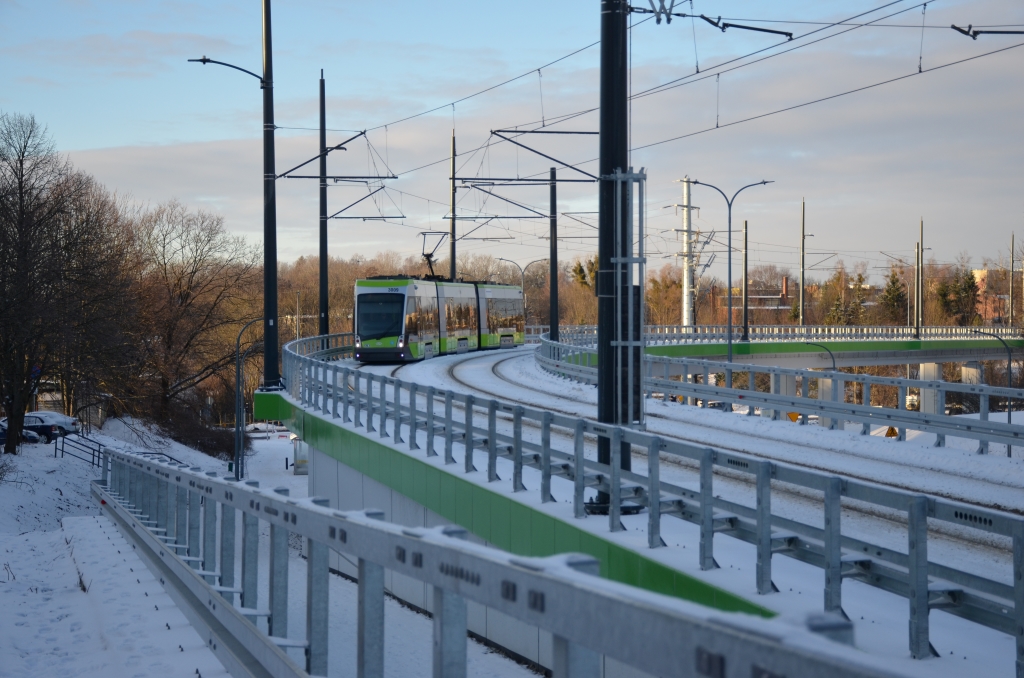
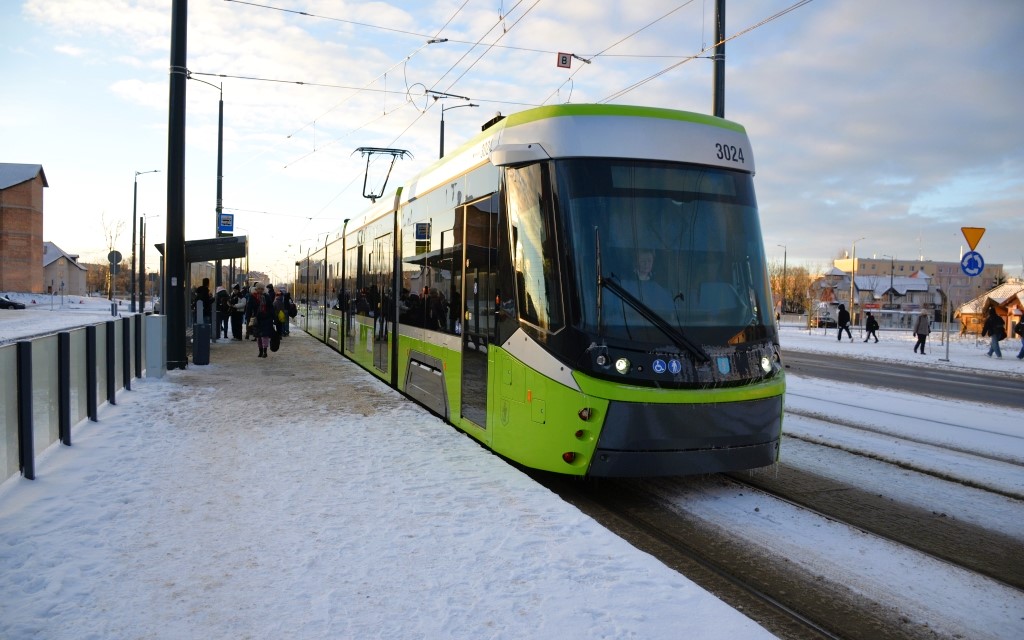
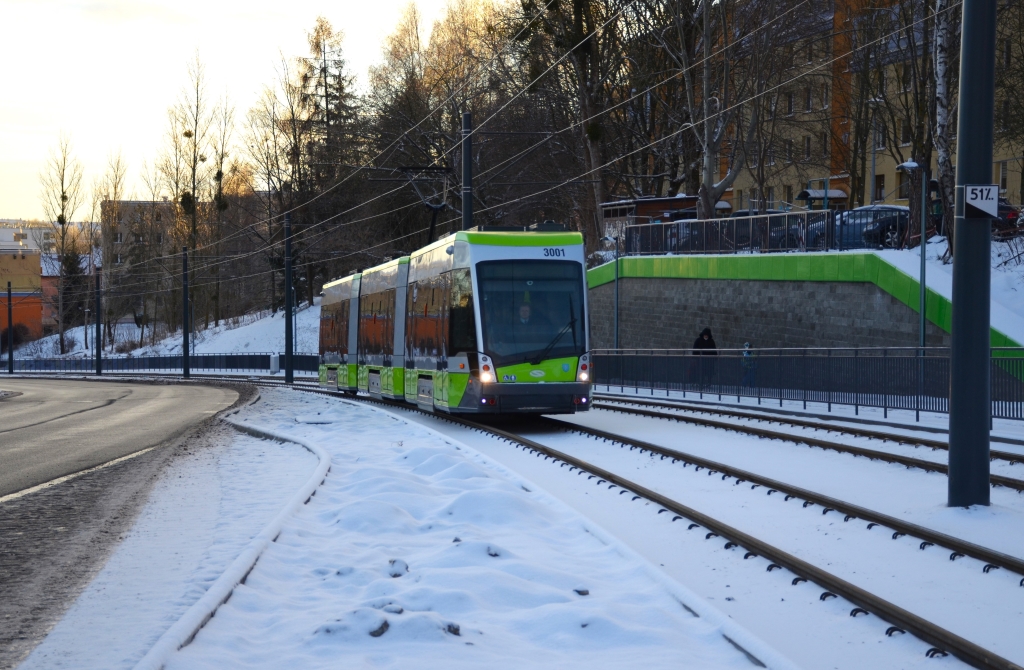
The new routes connect important points of interests: the railway station and the historic centre situated in the northern and northwestern part of the town with the large and densely populated residential estate of Jaroty in the southern extremity. The same areas were connected 8 years earlier by tram lines 1 and 2, but this time the new tram extension has a more eastern alignment, parallel to the previous tram corridor at a distance of about 1-1.5 km.
Line 4 starts at the Main Railway Station, while line 5 has the terminal near the entrance gate of the historic centre of Olsztyn. From this gate comes the name of the stop – Wysoka Brama, which can be translated into English as High Gate. The terminal is shared with line 1, and in order to be able to accommodate two lines it had to be moved several dozen meters from a previous location in the 11 Listopada, street, where only one storage track was found. Now that two lines operate at this terminal, two storage tracks are necessary. The town hall planned to build the terminal at the current location with two tracks even before starting construction of the first phase of the tram network, but archaeological findings and necessary subsequent research made it impossible at that moment.
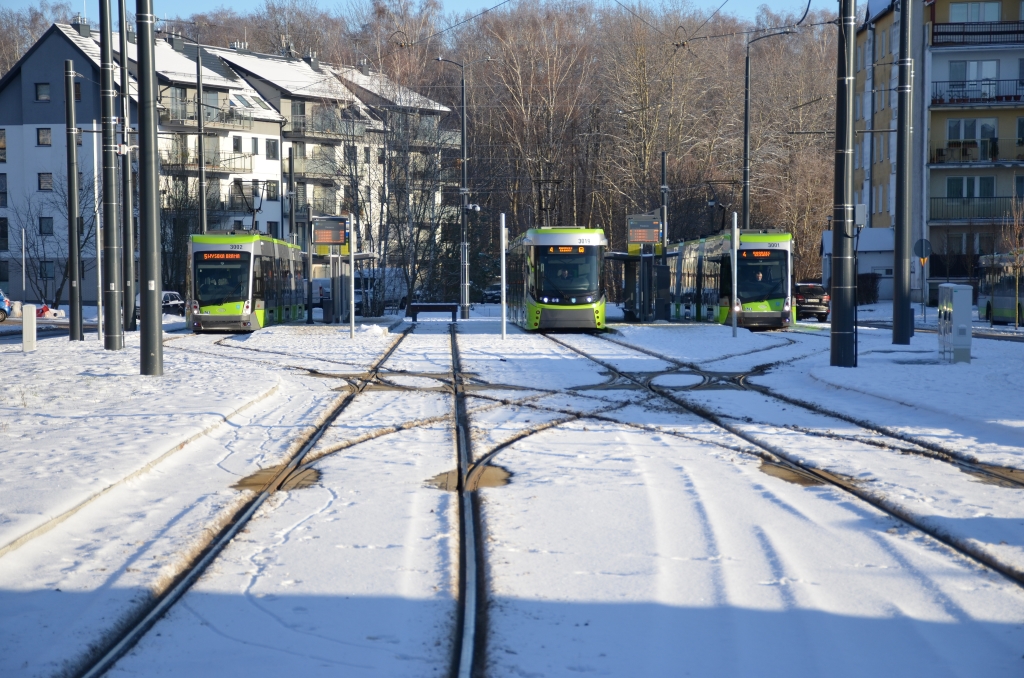
From the crossroad of Tadeusza Kosciuszki and Jozefa Pilsudskiego streets, the lines 4 and 5 run together along the Jozefa Pilsudskiego, Stefana Wyszynskiego, Synow Pulku, Ignacego Krasickiego and Tomasza Wilczynskiego streets. On the last mentioned street the route ends at a 4 track stub terminal named Pieczewo after the local housing estate. In the Pilsudskiego and Wilczynskiego streets, tram tracks are laid in the middle of the street, and mixed tram and bus operation is implemented with common stops and lanes. On the other sections, tram tracks are built on the side of the street and are segregated from the rest of the traffic. The most impressive infrastructure element on the new route is represented by the 270 m viaduct over the crossroad of Krasickiego street with Synow Pulku. It allows trams to cross a steep valley faster, but also to avoid an intersection managed by traffic lights.
The cost of the whole project was 607 million zloty, from which 421 were covered from European funds available from the Operational Program for Eastern Poland. In order to ensure conditions for operating the new tram route, the town hall bought in previous years 12 Panorama model trams from the Turkish producer Durmazlar. Due to the lack of capacity of the tram depot opened 8 years ago for the first phase of tramlines building, an extension of it had also to be built. The extension contains a parking hall with 5 tracks and a service hall with 3 tracks. The storage capacity is for 16 trams of 32,5 m length. The construction work started in July 2022 and was finished in time for the inauguration of the new route.
The operation of the new route is made with mixed rolling stock. Both new Durmazlar Panorama and older Solaris Tramino are used. The timetable of the two lines 4 and 5 is interlaced, with each line having a 15 minute frequency on working days. During peak times, additional trips are performed on line 4. On weekends, the frequency varies from 15 minutes on Saturday mornings, to 20 minutes in the afternoons and gets the lowest to 30 minutes on Sunday mornings.
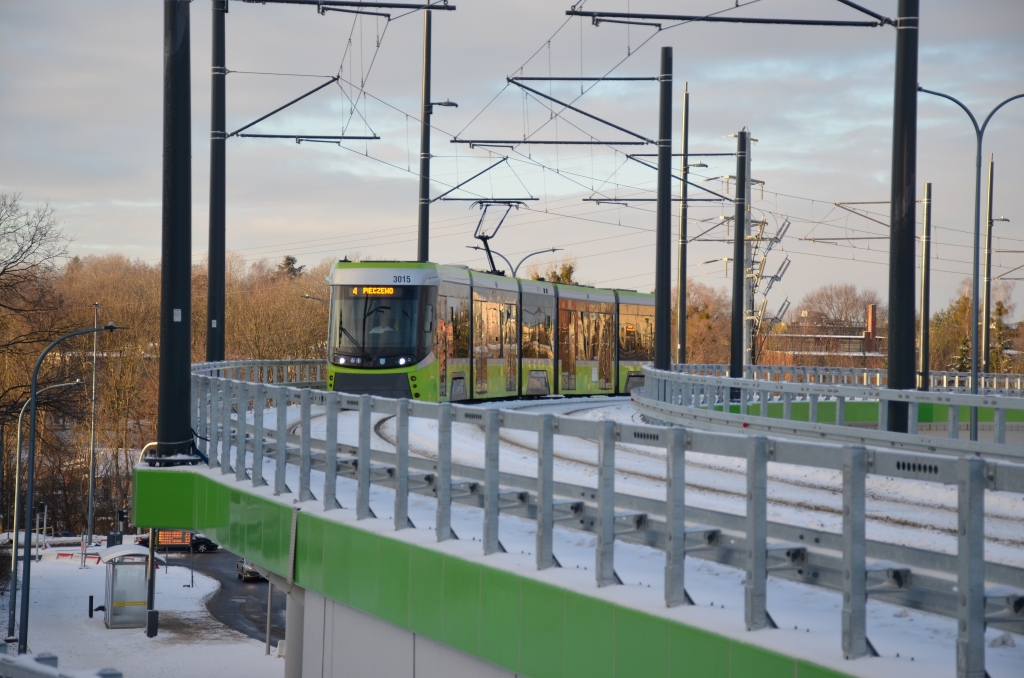
This is definitely not the last time when we hear about tram route inaugurations in Olsztyn. The town hall has further plans of extensions for the next years. The closest to become reality is the segment in the Wilczynskiego street that is supposed to connect the two southern branches of the tram network and offer even a better coverage of the neighbourhood of Jaroty. At the intersection of Krasinskiego and Wilczynskiego streets the junctions that will allow trams to go into the western direction have already been built. After the dark times from communist era, the future looks promising for trams in Olsztyn!
A network map is available here: https://www.urbanrail.net/eu/pl/olsztyn/olsztyn.htm
We last reported on Olsztyn’s tram here:
https://www.urban-transport-magazine.com/en/fleet-expansion-olsztyn-puts-new-durmazlar-panorama-trams-into-service/
All photos: © Silviu-Costin Iancu
15.01.2024
